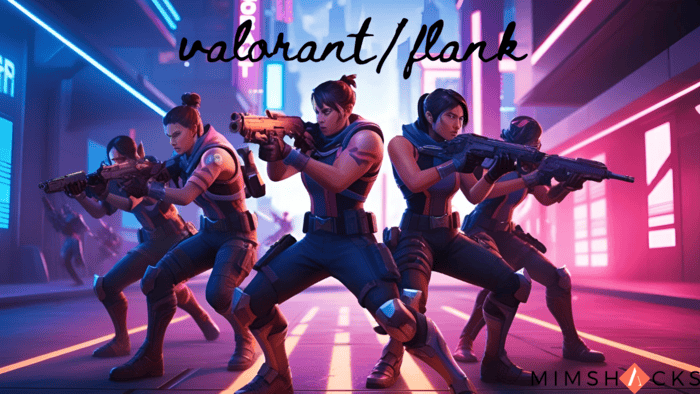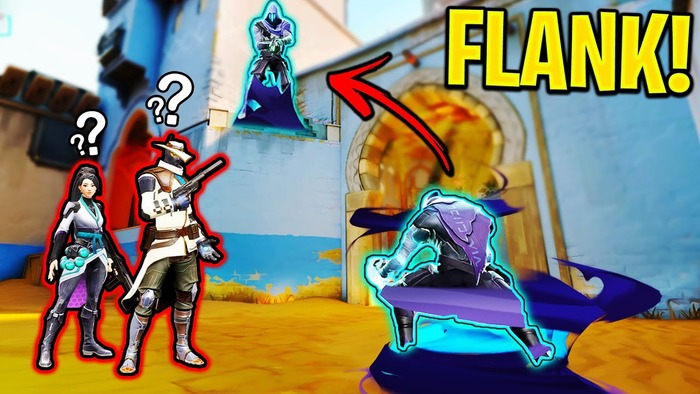What Is the Role of Flanking in Valorant?
Flanking in Valorant is when you attack enemies from the sides or rear, avoiding their primary defenses to gain a better position and catch them by surprise.
Calling all Valorant players and stealth experts! Today, we’ll dive into a tactic that can shift the momentum of a match: flanking.
If you’ve ever wanted to be the one who surprises the enemy from behind to clinch the win, you’re in the right place.
Let’s break down this vital tactic and see how it can take your gameplay to the next level!

What Is Flanking in Valorant?
In Valorant, flanking involves approaching the enemy from the side or rear rather than engaging them directly.
It’s like taking an alternate route, similar to how a covert operative might move unseen while the enemy focuses on the front.
Key elements of flanking include:
- Striking from unexpected angles
- Skirting around primary defensive positions
- Catching the enemy off guard
- Disrupting the enemy’s attention and causing confusion
Is Flanking Effective or Risky?

Flanking in Valorant offers both benefits and challenges:
Benefits:
- Surprise Attack: Flanking catches enemies off guard, giving you the element of surprise.
- Strategic Positioning: It provides superior angles for engaging enemies.
- Intel Collection: Flankers gain valuable insights into enemy positions.
- Psychological Impact: Flanking disrupts enemy coordination and creates confusion.
- Round-Deciding: A successful flank can secure critical rounds.
Challenges:
- Isolation: Flankers face the risk of becoming isolated from their team.
- Predictability: Overuse of flanking makes it easier for enemies to anticipate.
- Resource Demands: It requires time and resources to execute effectively.
- Team Weakness: Flanking can leave the team exposed or outnumbered in other areas.
- Counterflank Risk: It exposes flankers to the enemy’s potential flanking attempts.
Flanking’s success relies on timing, map knowledge, and good coordination with the team.
How to Apply the Concept of Tactical Movement in the Game
Using the idea of strategic positioning effectively in communication can enhance your team’s coordination:
Calling a Tactical Move:
- “I’m positioning through the center.”
- “The controller is moving from a distant position, stay aware!”
Requesting Support for Positioning:
- “Can someone monitor our rear?”
- “The scout, can you set up a detection trap behind us?”
Reporting Opponent Movements:
- “They’re coming from the side entrance!”
- “One might be coming from behind, stay alert.”
Coordinating Group Movements:
- “Let’s split our push, two from the middle and one from the alternate route.”
- “I’ll maneuver once you begin the main assault.”
Post-Round Feedback:
- “That surprise maneuver won us the match, excellent teamwork!”
- “Next time, we must stay more aware of enemy positioning.”
Note:
Effective and clear communication about movement can be the key to success.
Related Concepts

When discussing tactical positioning in the game, you’ll come across these strategies:
- Distraction: Moving in a way that draws attention from the primary target.
- Movement Shifts: Changing your position across the map to respond to or predict enemy actions.
- Angle Control: Setting up with teammates to cover different views, preventing enemies from outmaneuvering.
- Dual Attack: A tactic involving multiple offensive angles to pressure the opponent.
- Zone Control: Dominating key regions limits enemy mobility and enables strategic movement.
- Execution Timing: The vital element of striking at the most opportune moment to maximize effectiveness.
With this knowledge, you’re now ready to take charge in the game. A well-executed move can decide the outcome of the round.
Remember to use these tactics strategically and not excessively, as predictability can lead to failure.
So, when you’re in action, evaluate the situation, communicate clearly, and you might be the one making that pivotal play.
Get ready to outmaneuver your opponents and control the game!





